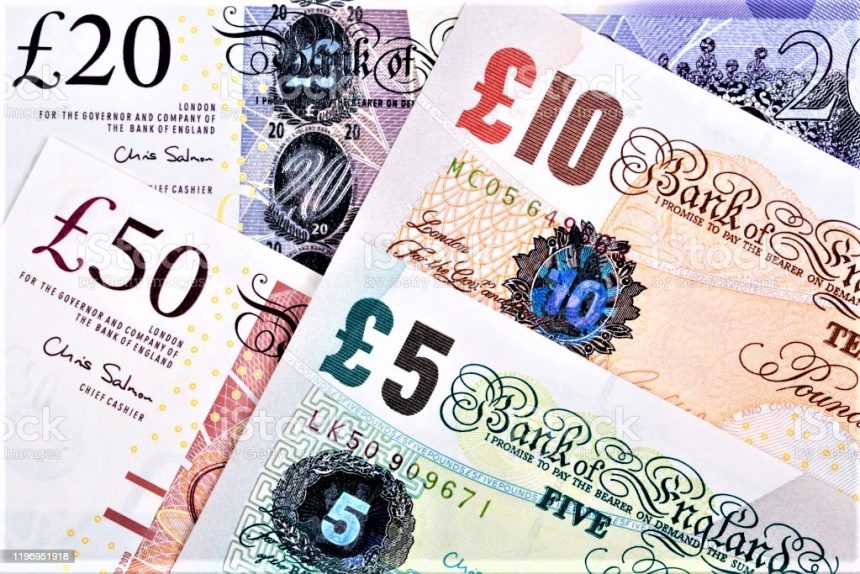Pound Strength Holds as Market Eyes London Summit.
The Pound Sterling has displayed notable strength at the start of the week, trading higher across the board against most major currencies, with the exception of the Euro. This firm performance comes as market participants prepare for a high-stakes EU-UK trade summit taking place in London on Monday, May 19, 2025. Since the completion of the Brexit transition on January 1, 2021, the UK and the European Union have grappled with a range of trade frictions, including regulatory divergence, customs checks, and non-tariff barriers. The prospect of a fresh trade framework—or even a non-binding understanding—has injected a dose of optimism into sterling markets, with investors keenly anticipating announcements that might alleviate these ongoing economic headwinds.
Non-Binding Defence Pact Could Unlock €150 Billion.
In a weekend Jefferies-hosted session, William Bain, Head of Trade Policy at the British Chamber of Commerce, highlighted the potential upside of a non-binding defence pact between the UK and the EU. Bain suggested that this agreement could open doors to some €150 billion in new business opportunities for British arms suppliers. Such an arrangement would allow UK defence manufacturers to bid more freely on EU contracts without facing cumbersome procurement rules that have emerged since Brexit. The quid pro quo would be European access to UK-developed defence technologies, potentially enhancing interoperability and joint research initiatives. The deal would not only benefit large prime contractors but also a network of smaller subcontractors and specialized component makers whose fortunes are closely tied to cross-border defence projects.
Agriculture and Energy to Benefit from Barrier Reductions.
Beyond defence, the trade discussions are expected to tackle non-tariff barriers in agriculture and energy—sectors that have felt the pinch of frictions most acutely. Farmers and food exporters on both sides of the Channel have bemoaned cumbersome sanitary and phytosanitary checks, as well as differing standards that can obstruct time-sensitive shipments of perishable goods. An agreement on mutual recognition of standards or streamlined inspection processes could slash delays at ports, lower compliance costs, and safeguard the competitiveness of UK and EU agribusinesses. In the energy sector, regulatory alignment on gas and electricity trading rules could foster greater cross-border interconnectivity, supporting security of supply and price stability. Taken together, these measures could add meaningful volumes to UK export figures and underpin sterling’s renewed resilience.
Robust UK GDP Strengthens Sterling’s Case.
Pound recent rally is not just about diplomatic maneuvering; it is grounded in solid domestic fundamentals. On Thursday, the UK Office for National Statistics released first-quarter GDP figures showing a 0.7 percent expansion, well above the 0.5 percent consensus estimate. Growth was broad-based, with the services sector—the engine of the UK economy—delivering a 0.8 percent increase and the construction segment contributing 0.9 percent. Manufacturing output, though more subdued, still rose by 0.4 percent, defying expectations of stagnation amid subdued global demand. The robust Q1 performance has emboldened market participants to reassess the Bank of England’s policy trajectory, suggesting that the central bank may err on the side of caution before considering rate cuts.
Services and Consumer Activity Remain Buoyant.
Complementing the GDP data, May’s purchasing managers’ indices (PMIs) painted a picture of continuing expansion. The services PMI came in at 54.8, comfortably above the 50 threshold that demarcates growth from contraction, while the manufacturing PMI stood at 51.2, indicating steady albeit modest expansion in factory output. These readings reflect underlying consumer resilience; retail sales volumes have held up in the face of still-elevated inflation, suggesting that households are drawing down savings buffers or reallocating spending toward discretionary categories. With consumer confidence slowly recovering from last year’s slump, the services-dominated economy appears poised to sustain moderate growth into the summer months, providing further support for the pound.
Moody’s Downgrade Delivers a Blow to the US Dollar.
On Friday, May 16, 2025, credit rating agency Moody’s Investors Service downgraded the US sovereign credit rating from Aaa—the highest possible grade—to Aa1, citing “sustained fiscal deterioration” amid ballooning budget deficits. Although Moody’s stressed that its long-term confidence in US institutions, governance, and monetary frameworks remains intact, the move represented a historic shift: the first time the US lost its pristine rating since Moody’s began covering the nation in 1918. In the immediate aftermath, the US Dollar Index (DXY)—which measures the greenback against a basket of six major currencies—slid from roughly 102.00 to near 100.40, as bond yields softened and risk assets regained appeal.
Treasury Yields Ease as Risk-On Sentiment Returns.
The downgrade triggered a modest rally in US Treasuries, with the 10-year yield dipping to approximately 3.85 percent from a recent multi-year peak near 4.10 percent. Reduced US yields tend to diminish dollar demand, easing upward pressure on global risk assets such as equities and commodity-linked currencies. Indeed, emerging-market assets saw inflows, and the Aussie and Kiwi dollars both edged higher. For sterling, the combination of domestic drivers and a softer dollar provided fertile ground for further gains, especially in cross-rate pairs like Pound, which reached around 1.3370 in the European session.
Trump-Xi Trade Prospects Add Complexity.
Complicating the narrative, US President Donald Trump’s recent comments on Fox News have rekindled speculation about direct trade talks with China. Trump affirmed his willingness to visit Beijing for face-to-face discussions with President Xi Jinping, raising hopes for tariff rollbacks or a broader trade détente. Market participants now juggle the implications of a weaker greenback, potential Fed rate-cut trajectories, and renewed Sino-US engagement. A successful Trump-Xi meeting could further undermine the dollar’s “safe-haven” status, funneling capital toward carry-trade currencies such as the pound, provided policymakers maintain supportive stances.
Fed Rate-Cut Timeline Debated.
Despite the dollar’s downgrade-induced weakness, markets remain divided on when the Federal Reserve might pivot from its current stance. The CME FedWatch tool prices in roughly a 20 percent chance of a rate cut by December 2025, down from 35 percent just a week ago. Contrasting with market optimism, a Morgan Stanley analysis published the same week argued the Fed is unlikely to reduce rates before March 2026, citing “sticky inflation” and the lingering impact of Trump-era tariffs on input costs. Those higher imported costs, compounded by tight labor markets, have kept core inflation near the Fed’s 2 percent target but with little sign of sustained downward momentum. Should US consumer inflation expectations—recently risen to 7.3 percent from 6.5 percent according to the University of Michigan—remain elevated, policymakers may feel compelled to maintain restrictive settings longer than markets anticipate.
UK April CPI: Next Big BoE Catalyst
Turning back to the UK, all eyes are now on Wednesday’s April Consumer Price Index release, scheduled for May 21, 2025. Consensus forecasts point to a headline print of 2.5 percent year-on-year, up from 2.3 percent in March, while core CPI—which strips out volatile food, energy, alcohol, and tobacco— is expected to rise to 3.6 percent from 3.4 percent. A hotter-than-forecast inflation reading would reinforce the Bank of England’s cautious stance, delaying any prospect of rate cuts and potentially setting the stage for another hike if underlying pressures prove persistent. Given the BoE’s dual mandate of price stability and sustainable growth, strong inflation data could tip the balance toward a marginally more hawkish tilt, keeping sterling bids alive.
Technical Landscape for Pound
From a technical perspective, traders are monitoring key levels in Pound. On the downside, initial support sits around the 50-hour moving average near 1.3300, followed by the weekly pivot at 1.3250. On the upside, resistance may materialize at the 100-hour moving average around 1.3400, with psychological barriers at 1.3450. The relative strength index (RSI) currently hovers near 62, suggesting there is still room for further momentum before overbought conditions emerge. A decisive break above 1.3400 could signal a test of 1.3500, while a slip below 1.3250 might open the door to 1.3200.
Euro’s Resilience Caps Sterling’s Upside
It is important to note that sterling’s gains have been somewhat constrained by a resilient euro. The EUR/GBP cross remains near 0.8550, supported by unexpectedly strong PMI readings in the Eurozone and an improving growth outlook in Germany and France. Investors wary of a one-sided rally into GBP may therefore await clearer signs of progress at the London summit before committing to further long positions. Should eurozone data continue to surprise on the upside, euro-strength could blunt sterling’s momentum, even if the UK-EU negotiations yield positive headlines.
Broader Implications for Global Trade
A successful EU-UK agreement would not only reshape bilateral ties but could also influence wider trade dynamics. If barriers fall and supply chains re-integrate, other countries may reassess their own trade strategies with the UK, potentially leading to new deals or revisions of existing accords. Moreover, clearer rules between two of the world’s largest economies could feed into multilateral forums such as the WTO, offering a template for addressing non-tariff barriers in other regions. For global markets, reduced uncertainty in Europe could lift investor sentiment broadly, supporting equities, credit spreads, and emerging-market currencies.
Looking Ahead: Summit Outcomes and Market Risks
As the summit unfolds on May 19, investors will parse official statements, joint communiqués, and press conference remarks for clues on the depth and enforceability of any agreements reached. Key questions include the precise scope of non-binding provisions, timelines for implementation, and mechanisms for dispute resolution. Markets may react sharply to any language suggesting further protracted negotiations or conditional clauses that could delay tangible benefits. Additionally, external risks—such as unexpected dovish signals from the Reserve Bank of Australia or geopolitical flare-ups—could derail sterling’s advance.
Conclusion: Pound Sterling Poised but Not Unassailable
In sum, the Pound Sterling enters this pivotal week on a position of relative strength, buoyed by solid domestic data, optimism around the EU-UK trade summit, and US dollar headwinds following Moody’s downgrade. Yet, sterling’s path higher is not guaranteed; robust euro performance, mixed Fed-cut expectations, and the pending release of UK inflation data all pose potential hurdles. Traders should remain vigilant around technical inflection points in Pound and EURGBP, and be prepared for heightened volatility as geopolitical and policy developments unfold.
[faq-schema id=”39612″]









